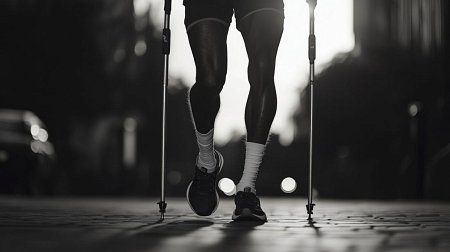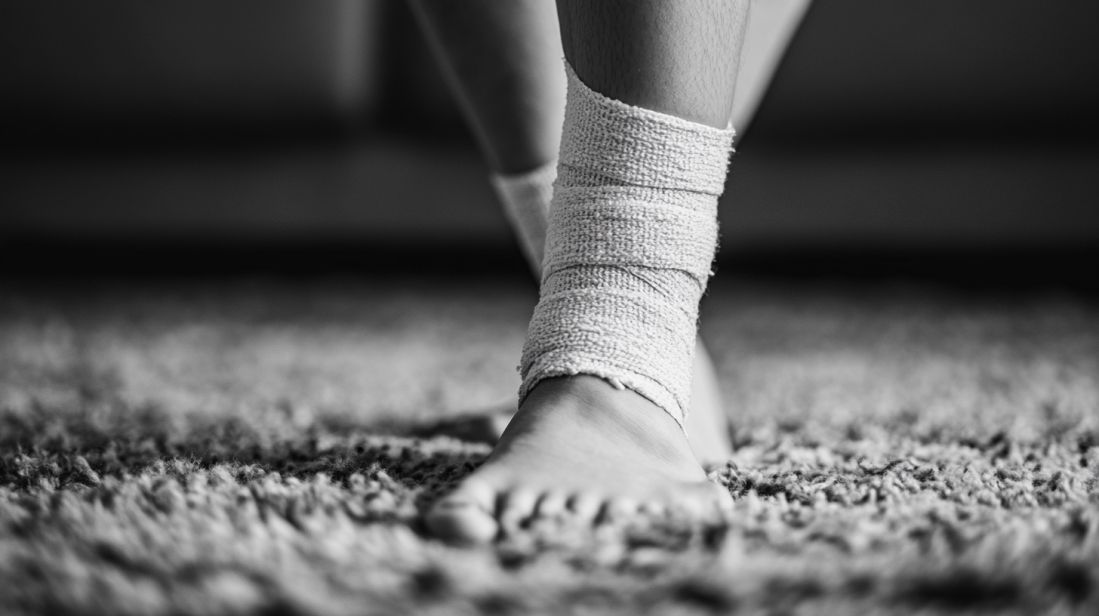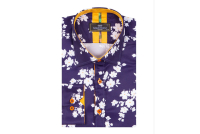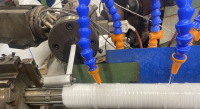The Athlete’s Guide to Ankle Injury Recovery
Ankle injuries are some of the most common setbacks athletes face, whether you're a runner, football player, or weekend warrior. A twisted or sprained ankle can feel like a huge roadblock, but with the right approach, recovery is possible, and you can return to your sport stronger than ever. In this guide, we’ll walk you through the steps to recover from an ankle injury, with a focus on the role of podiatry, rehab exercises, and strategies to get you back to performing at your best.
Understanding Ankle Injuries
Before diving into recovery, it's important to understand what exactly you're dealing with. Ankle injuries can range from mild sprains to more severe fractures, and recognising what type of injury you have will help shape your recovery plan.
Types of Ankle Injuries
-
Sprains and Strains - These are the most common ankle injuries. A sprain happens when the ligaments around the ankle stretch or tear, while a strain involves damage to the muscles or tendons. Both can vary in severity, from mild discomfort to more intense pain and swelling.
-
Fractures - A fracture occurs when one of the bones in the ankle breaks. This is a more serious injury that might require casting or surgery, depending on the type of break.
-
Tendon Injuries - The tendons around the ankle, particularly the Achilles tendon, can also be injured, leading to pain and difficulty moving the foot.

Causes of Ankle Injuries
Ankle injuries in athletes often happen during sudden changes in direction, jumping, or landing improperly. Uneven surfaces or playing on hard ground can also increase the risk. Additionally, fatigue can make you more prone to injury because your muscles and ligaments become less responsive.
Signs and Symptoms
If you’ve injured your ankle, you'll likely notice some common symptoms: swelling, bruising, and pain (especially when moving or putting weight on it). In severe cases, you may hear a popping sound or feel a sharp pain that doesn't go away. If you're unsure whether it’s a sprain or something more serious like a fracture, it’s always best to seek medical attention.
Immediate Actions After an Ankle Injury
Once you’ve hurt your ankle, what you do next can really impact how quickly and effectively you recover. Early intervention is key.
Rest, Ice, Compression, Elevation (R.I.C.E.)
As soon as you suspect an injury, apply the R.I.C.E. method to help reduce swelling and give your body the best chance to heal:
-
Rest - Avoid putting weight on your injured ankle. Take a break from activity until the pain subsides.
-
Ice - Apply ice to the affected area for 15-20 minutes every 2 hours for the first 48 hours. This helps reduce swelling and numbs the area to relieve pain.
-
Compression - Use an elastic bandage or compression wrap to reduce swelling. Just be sure it's snug but not too tight, as that could cut off circulation.
-
Elevation - Raise your ankle above heart level whenever possible to help reduce swelling.
When to Seek Medical Help
If you’re experiencing severe pain, can't put weight on the ankle, or notice significant bruising or swelling, it’s important to consult a healthcare professional. An X-ray might be necessary to rule out a fracture.
The Role of Podiatry in Ankle Injury Recovery
Podiatry plays a huge role in recovery, especially if you’re an athlete who needs to get back to high-performance activities quickly. Podiatrists specialise in diagnosing and treating foot and ankle conditions, and they can help guide your rehabilitation process.
How Podiatry Helps
Podiatrists assess the mechanics of your foot and ankle to determine the best way to support healing. They’ll look at your walking and running patterns, and sometimes recommend custom orthotics to correct any imbalances. This is especially important if your injury was caused by poor biomechanics.

Custom Orthotics
For athletes, wearing the right shoes is essential, but sometimes even the best shoes can't solve all the problems. A podiatrist may prescribe custom orthotics—special insoles that are designed to give your foot extra support, realign the ankle, and absorb shock. These are particularly helpful for preventing re-injury or alleviating discomfort during the healing process.
Biomechanics and Gait Analysis
Podiatrists often use gait analysis, which involves watching how you move when you walk or run. This can help identify underlying problems, like overpronation (when your foot rolls inward too much) or supination (when your foot rolls outward), both of which can put extra stress on the ankle and increase the risk of injury.
When to See a Podiatrist
If your injury isn’t improving or if you’re dealing with recurrent ankle issues, the experts at Applied Motion Podiatry, known for their expertise in working with sports enthusiasts, recommend consulting a podiatrist. They’ll assist with injury prevention, gait correction, and offer specialised treatments such as foot mobilisation and ankle strapping, which can significantly accelerate recovery. Seeking professional advice ensures that you’re not only treating the current issue but also building a stronger foundation for future activities.
Rehabilitation and Strengthening Exercises
Once you’ve dealt with the initial swelling and pain, it’s time to focus on rehab. Rehabilitation exercises are crucial for restoring movement, strengthening the muscles around the ankle, and preventing future injuries.
Early-Stage Rehab
In the first few days after an injury, you should focus on gentle movements to prevent stiffness and promote blood flow. Try ankle circles, where you rotate your foot in a circular motion, or gently flex and point your toes to maintain range of motion.

Mid-Stage Rehab
Once the pain starts to subside, it’s time to strengthen the muscles and ligaments around your ankle. Resistance band exercises are great for this. Start with light resistance and gradually increase as your strength improves. Heel raises, where you stand on your toes and slowly lower yourself back down, are also effective for rebuilding strength in your calves and ankles.
Late-Stage Rehab
As you progress, you can begin to add more functional exercises, like hopping, jumping, and lateral movements. These exercises will mimic the movements of your sport, so your body gets used to handling the stresses it will face once you return to full activity. Focus on balance exercises as well, such as standing on one foot or using a balance board, to improve your proprioception and prevent future ankle rolls.
Preventing Future Ankle Injuries
One of the best things you can do after recovering from an ankle injury is to take steps to prevent re-injury. These strategies can help keep your ankles strong and resilient for the long term.
Strengthening and Stabilisation
Even after you’re fully recovered, continue with exercises that target the muscles around your ankle. A strong ankle is less likely to get injured, so make strengthening part of your regular fitness routine.
Proper Footwear
Wearing the right shoes can make a huge difference. Make sure your footwear fits properly and is designed for the activity you’re doing. For example, running shoes provide support for forward motion, while basketball shoes offer more lateral support. If you have flat feet or other specific issues, custom orthotics can also help.
Warm-Up and Stretching
Before any activity, take the time to warm up properly. Dynamic stretches and mobility exercises will help loosen up your ankles, feet, and legs, reducing the risk of injury. Static stretching after your workout will help maintain flexibility and keep your muscles limber.
Cross-Training
Doing a variety of exercises will keep your body balanced and reduce the risk of overuse injuries. If you’re a runner, for example, consider adding swimming or cycling to your routine to give your ankles a break while still staying active.
Returning to Sport
After going through the rehab process, the next step is returning to your sport. But don’t rush it. Gradually reintroduce yourself to the movements of your sport, and listen to your body.
Gradual Reintegration
Start slow—don’t jump right into a full game or intense practice. Begin with lighter training and progressively work your way back up. Focus on drills that mimic your sport's movements but at a lower intensity.
Knowing When to Stop
If you feel pain or discomfort, don’t push through it. Give your ankle the rest it needs to fully recover. It’s always better to take a few extra days off than risk re-injuring yourself.
The recovery process might take time, but with the right approach and a solid rehab plan, you’ll be back on track before you know it—stronger, more aware of your body’s limits, and more prepared than ever to prevent future injuries.
-
Why Rochester Accounting LTD is the Best Choice for Your Small Business Accounting Needs
Written on Tuesday, 25 March 2025 15:20

Introduction The Small Business Accounting Challenge
Running a small business in the UK presents numerous challenges, with accounting and financial management often ranking among the most complex and time-consuming responsibilities. From navigating constantly evolving tax regulations to managing cash flow effectively, the financial aspects of business ownership can quickly become overwhelming. This is where selecting the right accounting partner becomes crucial for sustainable growth and success.
-
Floral Shirt Men
Written on Monday, 03 March 2025 17:58

Floral shirt men have become a wardrobe essential for those looking to add a touch of personality and boldness to their style. Once considered a niche trend, floral prints have now taken the fashion world by storm, offering versatility, comfort, and a unique aesthetic appeal. Whether you’re heading to a beach party, a casual outing, or even a semi-formal event, a well-chosen floral shirt can elevate your look effortlessly.
-
What are the must-see attractions in Zakopane?
Written on Friday, 28 February 2025 13:21

Nestled at the foothills of the majestic Tatra Mountains, Zakopane is one of Poland’s premier tourist destinations. This charming town beckons with a plethora of must-visit attractions that range from breathtaking natural landscapes to rich cultural experiences. Zakopane is celebrated for its traditional wooden architecture, picturesque settings, and vibrant cultural scene, making it an appealing spot for travellers worldwide.
-
Ultimate guide to stylish men's duster sweaters
Written on Thursday, 30 January 2025 15:03

As the chill of autumn sets in, the fashion-forward man begins to look for ways to stay warm without sacrificing style. Enter the duster sweater, an essential piece for any man's wardrobe. This long cardigan mens style is a versatile garment that can be dressed up or down depending on the occasion. But what exactly makes these sweaters so appealing? Is it their length, providing extra warmth and coverage? Or perhaps it's their unique aesthetic, straddling the line between casual comfort and sophisticated elegance?
-
Rubber Profiles and Noise Insulation Solutions for the Automotive Industry – ST Plastics
Written on Wednesday, 22 January 2025 16:01

At ST Plastics, we specialize in the production of rubber profiles, seals, and noise insulation solutions for the automotive industry. Our products are designed to meet the highest standards of performance, precision, and durability, contributing to improved vehicle integration and quality.

